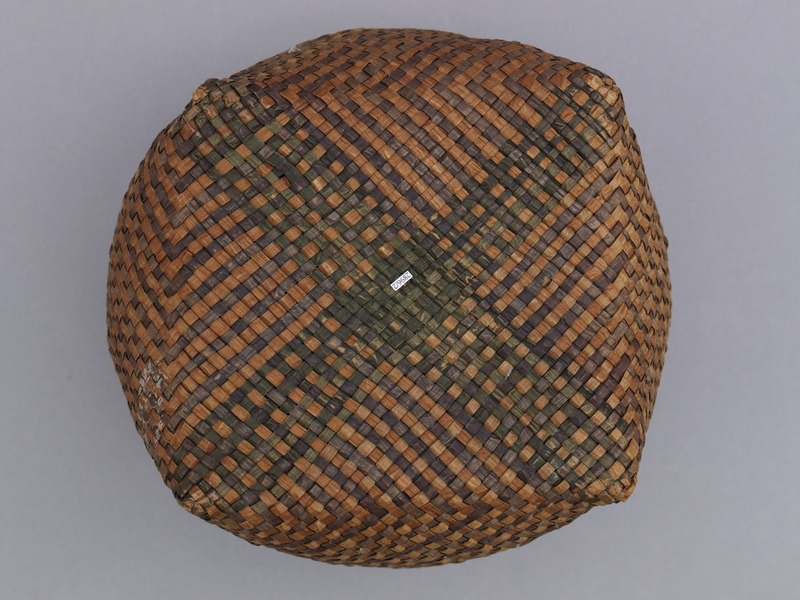Basket Item Number: 2896/2 from the MOA: University of British Columbia




Description
Woven cedar bark basket. The base is square with a prominent criss-cross pattern across it, emphasized by interlaced light and dark brown cedar. The sides of the basket rise up from four sharp corners into a rounded body, also with interlaced strips of coloured cedar. The rim is lined on the inside with a roll of cedar and held to the basket by cedar stitching.
History Of Use
Baskets made by plaiting long, narrow strands of the inner bark of the cedar tree were and are common to all First Nations of the Northwest Coast. Such baskets, especially if plaited diagonally like this one, are relatively soft and flexible and therefore well suited to hold a range of materials or foods. A basket of this size could be a container for berry picking, and a large basket or bag could store gear or dried provisions, as well as be folded for travel. Small plaited baskets were also made for sale to tourists and collectors.
Specific Techniques
For this diagonally woven basket, a square bottom is woven, then woven diagonally in the middle of each side, and it changes the corners. This type of weaving was also used for making mats. Like the patterns woven into plaited cedar-bark mats, the plaid or geometric designs are made using strands dyed black by being buried in mud, or red absorbed from the inner bark of red alder.
Item History
- Made in British Columbia, Canada between 1910 and 1930
- Owned by David Bakewell and Elizabeth Bakewell before June 18, 2011
- Received from David Bakewell (Donor) and Elizabeth Bakewell (Donor) on June 18, 2011
What
- Name
- Basket
- Identification Number
- 2896/2
- Type of Item
- basket
- Material
- red cedar bark and dye
- Overall
- height 16.5 cm, width 22.8 cm, depth 21.0 cm
Who
- Culture
- Tsimshian ? or Haisla ?
- Previous Owner
- David Bakewell and Elizabeth Bakewell
- Received from
- David Bakewell (Donor) and Elizabeth Bakewell (Donor)
Where
- Holding Institution
- MOA: University of British Columbia
- Made in
- British Columbia, Canada
When
- Creation Date
- between 1910 and 1930
- Ownership Date
- before June 18, 2011
- Acquisition Date
- on June 18, 2011
Other
- Item Classes
- basketry
- Condition
- good
- Accession Number
- 2896/0002